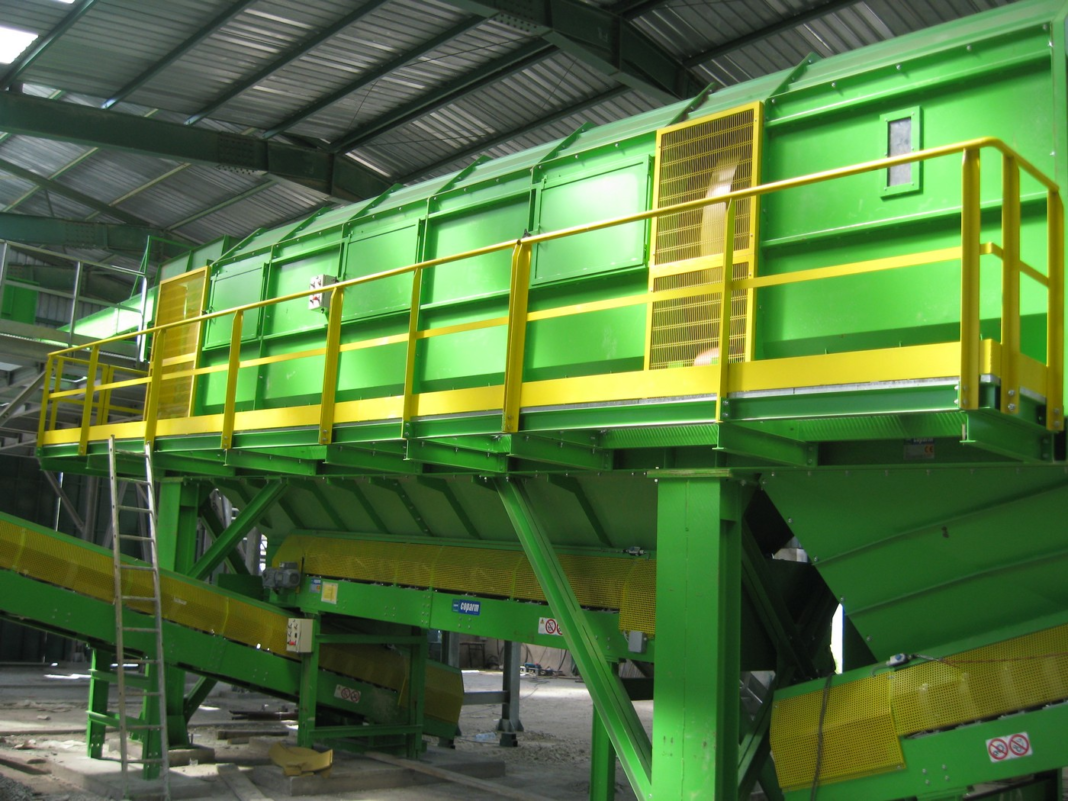Efficient waste management and recycling require advanced sorting solutions to separate materials effectively. One of the most valuable tools in this process is the trommel screen—a cylindrical, rotating drum used to sort materials based on size. These machines play a crucial role in recycling sorting solutions, helping facilities process large volumes of waste with precision and efficiency.
In this article, we’ll explore how trommel screens work, their benefits, and why they are an essential component of modern recycling operations.
How a Trommel Screen Works
A trommel screen consists of a rotating drum with perforated holes that allow smaller materials to pass through while larger materials continue along the drum’s length. The screening process is divided into different stages:
- Material Feeding – Waste materials are fed into the trommel screen via a conveyor or loader.
- Screening Process – As the drum rotates, smaller particles fall through the perforations while larger items continue to move forward.
- Separation and Collection – Sorted materials are directed to separate output areas for further processing, recycling, or disposal.
Benefits of Using a Trommel Screen in Recycling
Trommel screens play a crucial role in modern recycling operations, providing efficient material separation and improving overall processing efficiency. These rotating drum screens are designed to filter and sort different materials based on size, making them an essential tool in waste management, composting, and various industrial applications. Below, we explore the key benefits of using a tTrommelscreen in recycling and what to consider when selecting the right one for your needs.
Efficient Material Separation
One of the primary advantages of a trommel screen is its ability to separate materials based on size. As the drum rotates, smaller particles pass through perforated openings while larger materials move toward the discharge end. This process simplifies the sorting of recyclables such as organic waste, metals, plastics, and aggregates. By improving material separation, trommel screens help recyclers achieve higher purity levels, which enhances the quality and value of recovered materials.
High Processing Capacity
Trommel screens are designed for high-volume applications, making them ideal for large-scale recycling operations. Municipal recycling facilities, industrial waste processors, and composting plants rely on these machines to handle significant amounts of waste efficiently. Their ability to process bulk materials quickly reduces bottlenecks in sorting lines, ensuring a steady workflow and improving overall productivity.
Low Maintenance and Durability
Built to withstand harsh working conditions, trommel screens feature robust construction and durable components. Unlike vibrating screens, which require frequent maintenance due to high-impact forces, trommel screens operate with minimal wear and tear. Their rotating drum design reduces stress on the machine, leading to fewer breakdowns and lower maintenance costs. Additionally, many models are equipped with self-cleaning mechanisms that prevent clogging and buildup, further enhancing their longevity.
Versatility Across Industries
Although commonly used in recycling facilities, trommel screens serve multiple industries, including construction, mining, and composting. In construction and demolition waste processing, they help separate valuable materials like wood, concrete, and metal for reuse. In the mining sector, they assist in screening minerals and ores, while composting operations use them to filter out oversized debris from organic waste. This versatility makes trommel screens a cost-effective investment for businesses handling various types of materials.
Improved Recycling Efficiency
By automating the sorting process, trommel screens reduce the need for manual labour, increasing processing speed and operational efficiency. Automated material separation ensures that recyclables are sorted with greater accuracy, reducing contamination and maximizing recovery rates. This leads to a more streamlined recycling work.
Choosing the Right Trommel Screen for Your Needs
When selecting a Trommel screen, consider the following factors:
- Drum Size and Perforation – Choose a screen with the appropriate hole size for your specific material sorting requirements.
- Processing Capacity – Ensure the machine can handle your facility’s waste volume effectively.
- Mobility and Installation – Some trommel screens are stationary, while others are mobile for on-site applications.
- Energy Efficiency – Look for models designed for low energy consumption to reduce operational costs.
Conclusion
A Trommel screen is a valuable addition to any recycling sorting solution, improving waste separation and processing efficiency. These machines enhance recycling operations by providing a reliable method for sorting materials, reducing contamination, and increasing resource recovery. Whether for municipal waste management, construction debris, or composting, investing in a high-quality trommel screen can significantly optimise recycling processes and contribute to a more sustainable future.







